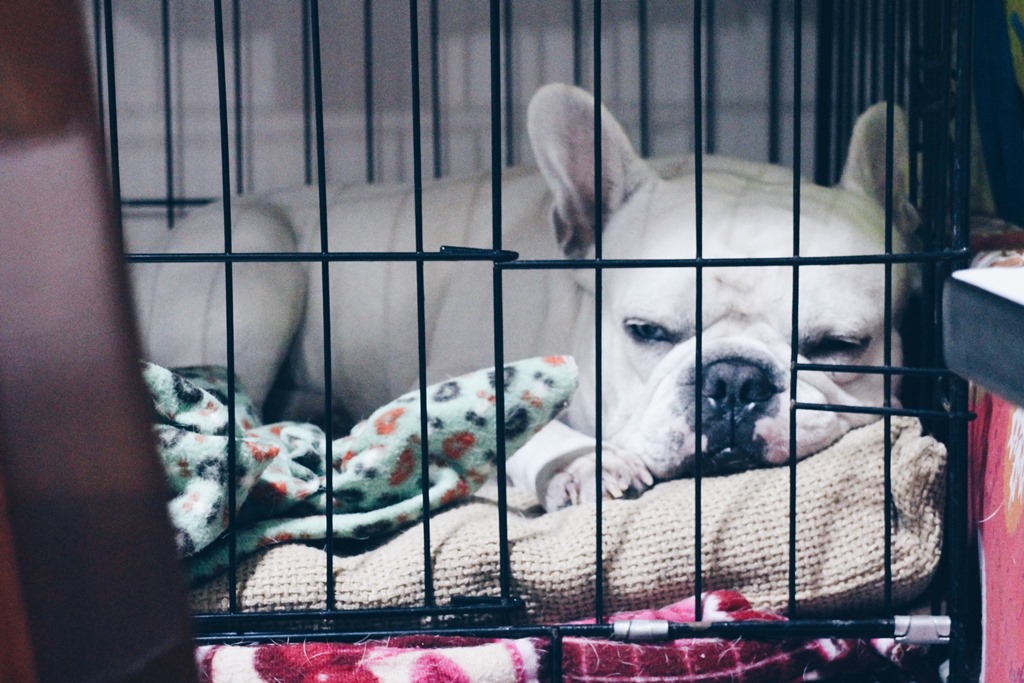Crate training is a crucial part of what your puppy will become in the coming months. Undoubtedly, you want your dog to be well-behaved in all circumstances and react properly at your command. If this happens, you and your dog will surely enjoy a happy relationship for a lifetime.
Dog crate training should start as soon as possible after you brought your puppy home. It is important that your dog will have a place to call its own where it feels safe, happy, and comfortable. This is the logic behind crate training. If you are successful with this training, teaching your dog other techniques and skills can be easier to do.
Here are seven strategies to make sure that the crate training of your puppy will be successful:
Contents
Start With the Right and Inviting Crate
Before going home with your dog, a crate should be waiting for you. And it should not just be an ordinary crate. It should have been specifically chosen to conform to your dog’s comfort. The crate should not be too tall and not too wide. It should just be a place where the dog can comfortably stand, lie down, and circle around. You should also make it as inviting as possible with warm beddings. There are many things that you can do to make the cage welcoming and really comfortable.

Create a Proper Mindset
The first time you bring the dog inside the crate is very important. Consistency always matters when training a dog. So when you bring the dog to its crate, be sure that it is sleepy and wants to rest. If it is busy playing, it will surely resist the action. It will try to come out. But when it is sleepy, it will see the crate as a safe place to rest.

Know a Dog’s Preference of a Sleeping Quarter
It may be impossible to know the preference of a new dog when it comes to its sleeping quarters. Does it want the bed and beddings that you place? Did it pee on it during its first night? During the first few times that you bring your dog to the crate, notice if it is comfortable with the beddings. If not, you have to remove the beddings. Most dogs prefer cool and hard surfaces to sleep on.

Reward Your Puppy After Using Its Crate to Rest
After noticing that your dog is going on its own to the crate to rest or sleep, giving a reward after he comes out will give a positive thought to your puppy. The reward can be treats that your puppy enjoys like food or toys. For sure, your cute little furry baby will be so happy to do it again.

Be Wary of the Time
Always make sure that the crate should only be used for sleeping and resting. For other activities like eating, playing, and going to the bathroom, it should be scheduled. Not being consistent with these schedules may result in soiling in the crate, chewing of beddings, and agitation. So always keep track of the time when to let your pup come out of the crate.

Innovate Some Crate Games
Your pup will love the crate more if you incorporate some crate games. Innovate games in which your pup will be coming in and out of the crate. Aside from being an enjoyable experience with your dog, it is also a physical workout for your puppy.

Remove All Accessories
Dog collars, leash, dog dresses, and other accessories are not actually natural to a dog. They are worn not because the dog wants it but you do for necessity and aesthetics. Your puppy will relish every moment that it is free from these accessories. Remove them when doing the crate training. She will soon associate the crate with being free.

You will soon reap the fruits of your labor if you are consistent and patient. Soon, you can leave your puppy inside its crate and have a cup of coffee next door. If your training is successful, you will see that your dog will be very calm and just as excited that you are back.
The duration of crate training varies. For some, it may only last for a week or so. But even if it takes longer with your dog, being patient is always the key to success. Always remember that crate training can be the gauge of the success of other training that your dog will soon undergo. Of course, you do not like to fail at the very first hurdle.



I did not have a crate for my puppy when we brought hom home. He is now a year old and not entirely trained. Can I start using the crate to complete the training for going outside?